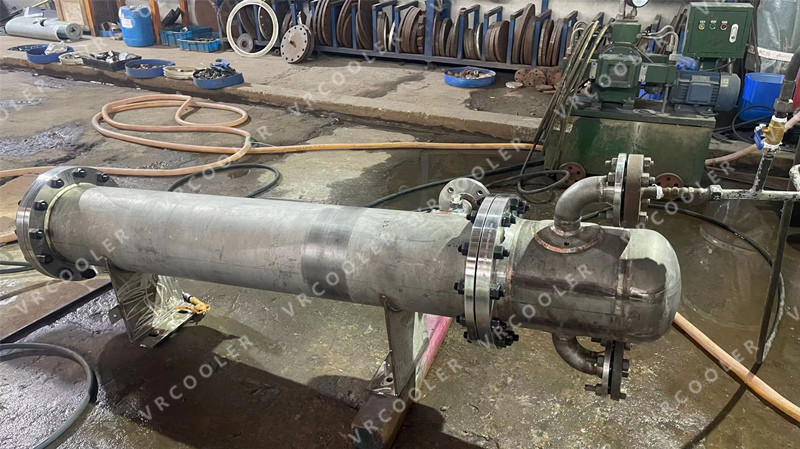Shell and Tube Steam Heat Exchangers
Structural components
Shell: usually cylindrical shell, is the main structure of the entire heat exchanger, used to accommodate the tube bundles and other internal components, and for the steam and the heated medium to provide flow space. The shell is generally made of carbon steel or stainless steel to ensure its strength and corrosion resistance.
Tube bundle: It consists of many heat exchanger tubes and is the core component for heat exchange. Heat exchanger tube is usually copper or stainless steel tube, with good thermal conductivity. Tube bundle in the shell of the arrangement of a variety of ways, such as triangular arrangement, square arrangement, etc., different arrangements will affect the heat transfer efficiency of the heat exchanger and fluid resistance.
Tube plate: located at both ends of the tube bundle, used to fix the heat exchanger tube, and separate the shell and tube course, so that the steam and the heated medium in their respective channel flow, to avoid mixing with each other. The connection between the tube plate and the heat exchanger tube can be expanded, welded and so on.
Head: Installed at both ends of the shell, with the tube plate together constitute the sealing space of the pipe process. The head is usually equipped with media import and export, so that the heated medium in and out of the heat exchanger.
Folding plate: installed in the shell, used to guide the flow direction of steam in the shell process, increase the flow rate of steam and turbulence, improve heat transfer efficiency. The shape and spacing of the refractory plate have a significant impact on the performance of the heat exchanger. Common refractory plates include bow-shaped refractory plate, disk - circular refractory plate, and so on.
Working Process
High-temperature and high-pressure steam from the shell of the steam inlet into the heat exchanger shell process, under the action of the refractory plate, the steam in the tube bundle between the zigzag flow, and the tube heated medium for heat exchange. After releasing heat, the steam gradually condenses into water and is discharged from the condensate outlet of the shell. The heated medium enters the tube from the inlet of the header, flows inside the heat exchanger tube, absorbs the heat transferred by the steam and then rises in temperature, and flows out from the outlet of the header, thus realizing the transfer and exchange of heat.
Advantages
Sturdy structure: able to withstand high pressure and temperature, applicable to various working conditions, high reliability and stability in large-scale industrial production.
Large processing capacity: the heat transfer area and processing capacity of the heat exchanger can be conveniently expanded by increasing the number of tube bundles and shell diameter, etc. to meet the needs of large-scale production.
Strong adaptability: it can deal with a variety of different properties of the medium, including high temperature, high pressure, corrosive media, etc., and has better adaptability to different process conditions.
Higher heat transfer efficiency: through the reasonable design of tube bundle arrangement and folding plate structure, it can effectively improve the heat transfer coefficient between steam and heated medium and realize higher heat transfer efficiency.


